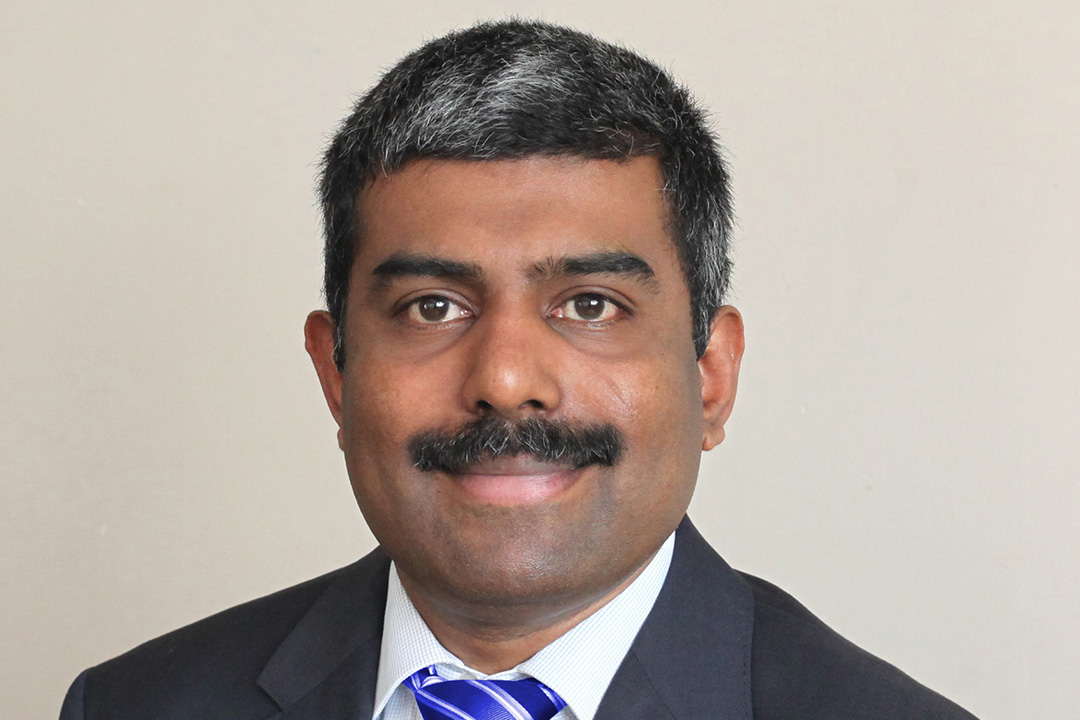
USask biomedical researcher searches for answers to viruses
A University of Saskatchewan (USask) biomedical scientist is aiming to identify and create cures for viruses before they evolve to make a deadlier impact.
By Kristen McEwen“Unlike human evolution—where discernible changes are not seen in a decade, or a lifespan—you can see viruses rapidly evolving in a short span of few years from being benign organisms to deadly pathogens,” said Dr. Anil Kumar (PhD).
A new assistant professor in the Department of Biochemistry, Microbiology and Immunology in the College of Medicine, Kumar has dedicated his career to studying the biology of viruses. Figuring out how viruses infect healthy cells is the key to finding a treatment.
“The interaction between a virus and the cells of its host is an ongoing battle,” Kumar said. “The cells mount multiple defenses to prevent virus infections, but virus continuously evolves ways to overcome those barriers and successfully infect cells.”
Viruses adapt relatively fast to new environments and to new hosts they encounter, which is why we often see viruses previously linked exclusively to animals making the jump to humans, Kumar explained.
His current focus is studying the Eastern Equine Encephalitis Virus (EEEV), a virus that fatally impacts humans and horses in eastern parts of Canada and the United States. The virus is transmitted via a mosquito bite and attacks the body’s nervous system, causing meningitis (an infection of membranes around the brain) and encephalitis (inflammation of the brain).
In recent years, there have been an increase in recorded incidents of mosquitoes spreading EEEV to humans. According to the Centers for Disease Control and Prevention (CDC), there were 38 reported human cases in the U.S. in 2019. Half of those patients died of encephalitis within two to 10 days of infection. Survivors often experience mild to severe neurological problems, including seizures and paralysis which in many cases can be lifelong.
In certain aspects, EEEV is similar to the Zika virus, which can also be transmitted to humans through a mosquito bite, Kumar explained. During post-doctoral research in the lab headed by Dr. Tom Hobman (PhD) at the University of Alberta, he started studying the Zika virus before it emerged into a pandemic in 2015.
“What we saw with Zika virus was, even though it was known for over 60 years, there were only about 15 recorded cases of infection world-wide until 2007. But then certain genetic changes occurred in the virus, which made it efficiently spread in human population, leading to the 2015-2016 pandemic,” he said.
“Something similar happening with viruses like EEEV is a real possibility,” he added.
Born in Trivandrum, India, Kumar took an early interest in studying viruses, starting his career path by observing virus infections in plants. After completing his bachelor’s degree in agricultural sciences at Kerala Agricultural University in 1999, Kumar pursued his master’s in plant virology at Indian Agricultural Research Institute, New Delhi. In 2006, Kumar shifted his focus to human viruses when he joined the lab of Dr. Ralf Bartenschlager (PhD) at the University of Heidelberg, Germany. He began studying dengue virus for his PhD, which he completed in 2010.
Upon arriving at USask, Kumar was interested in the potential for collaboration and access to facilities to develop a vaccine for EEEV. USask’s Vaccine and Infectious Disease Organization-International Vaccine Centre, a Level 3 biosafety facility with vaccine development infrastructure, is ideal to study virus biology and develop and test new vaccine candidates. The strong virology research community on campus was also appealing as Kumar may look to rely on their expertise for the creation of a vaccine.
He is also looking forward to the potential collaboration with researchers in USask’s Western Veterinary College of Medicine, to develop better EEEV vaccine for horses.
“When there is a future outbreak of EEEV, we should have vaccines ready to protect the people and horses from the lethal consequences of the infection. That is the goal I would like to pursue,” Kumar said.

